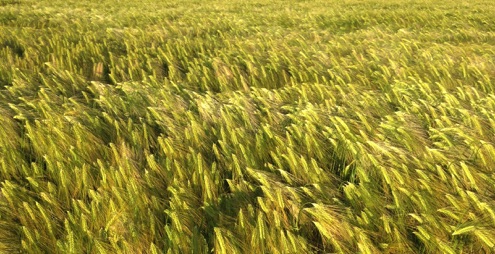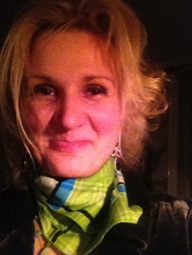I am currently discussing a new book with various publishers... here is a sneak preview:
"This is a book about teaching- or rather learning how to teach all over again.
It is based upon the research I undertook in my PhD from 1994-2000. Only now does it seem possible to begin talking and publishing my findings, observations and visions for a new system of teaching. I have been a teacher of general creativity, singing, dance and drama for the last 20 years, in addition to being a singer-songwriter, mother of three and designer of gardens and interiors. I chose to have my first child, Emanuel at the age of 21, for me the most natural choice in the world, and I searched for learning and educational models which I would feel comfortable exposing my son to. I found Rebeca and Mauricio Wild and I found Steiner schools, and together that sparked my quest for a new, child based system of learning and teaching.
My favourite time of the year at school, was project week: we were able to choose a topic, given paper and card, access to the school library, and plenty of encouragement. In that week I crafted projects; ‘The Great Barrier Reef”, “The Elizabethans”, “Furniture in the 18th Century”, “Butterflies”….I not only loved every moment of it, but I retained all the information I had learned. I was gifted one whole year like that at school having to stay two years in the top form of my school, deemed too young to enter secondary education. I was set projects and allowed to get on with the work. Later that summer, I left the school early and experienced a summer of learning about plants, ecology and writing stories with my German Au pair. Those were the most formative times of my schooling, I loved them.
I trawled libraries, magazines and countries, looking for advanced systems of education: systems which I believed harnassed, developed and encouraged the natural creativity inherent within each of us from birth. I found a small handful I could deem worthy, including the Pestalozzi in Ecuador, a certain secret Russian boarding school in the Taiga, Monetssori and the Reggio Emilio schools, the Jena-Plan schools, Forest Schools in Scandinavia and the Steiner schooling system. The Pest and the Russian school enable and allow the children to get on with what interests them. These two gems, gave me real hope in my quest for real learning. I wanted as a child, to be taught ‘how to learn’, not be stuffed full of random facts. And year after year I would ascend to the next class only to be informed that all they had taught me previously was ‘rubbish” and we would have to start again, with a more complex version. I never understood why they did not trust us to teach us the thing right in the first place. Fobbing off is not a thing the children ever experience in the two super schools I found. The children run the show and the adults are there, delighted to facilitate the growth of their young progeny. They delight in the enthusiasm and curiosity of the youth and they are there to learn alongside them.
I developed my own way of teaching as a direct result of studying these systems. The children i teach love me, which is a real pleasure and I of course adore them. I watch them grow not only physically, but most importantly, in the confidence in themselves. I once told the head of music at my school that really I teach confidence. He thought I was saying that I wasn't any good as a music or acting coach. I couldn't explain it to him as he had no notion to what i was referring… I was speaking of the confidence to be yourself, from the deepest inside out.
Chapters:
The Physical and Cultural Environment of Teaching
The classroom
A quick discussion of traditional classroom modes- how the physical structure implies particular teaching styles. And a brief introduction to alternative classrooms.
A radical approach to the physical learning environment
A toolbox for structuring a learning/ teaching environment. Planing tools, imaginative tools and approaches to getting the work carried out and funded.
The curriculum
How to set a curriculum for a class of thirty. Identifying the common denominators and establishing how subject specialisation can be achieved.
Why we go to school
A potted history of why we stick our children into institutions. A brief outline of alternative traditions and a short exploration as to what could potentially be gained form a school setting.
Out of school learning
A short introduction into the extra-curricular world of learning, how and why we engage our children in it, and a look at aspects of child labour and work experience.
Alternative schools
A look at the Pesta and our secret Russian school
My visionary school
introducing the experiential learning, apprentice-baed school in a unique physical setting
The Human interactions of Learning
Real teaching
An explanation of HOW we learn. Looking at my own model and the law of attraction and latest psychology and cognitive science.
How we develop preference, interest and curiosity
Exploring the true motivations of knowledge acquisition.
When Do we stop learning?
Do we ever stop? Discussing the Lifelong Learning campaigns, personal development and the move in society towards entrepreneurship.
How Does Traditional Education Mould Us?
Exploring the belief systems which come with traditional teaching methods, and the therapies and medications given to soothe these.
How Does Real Teaching affect our Health?
The happiness quotient explored, as we learn to satisfy our creative needs through education. Possible impacts on society as a whole.
The Core of the Teacher
How does a real teacher act? What skills do they need to possess? Can these be taught in universities, or are we looking for raw gems?
The New Teachers
A look at the work of a new teacher, how this new paradigm affects the entire lifestyle, job satisfaction and the VALUE of educators.

